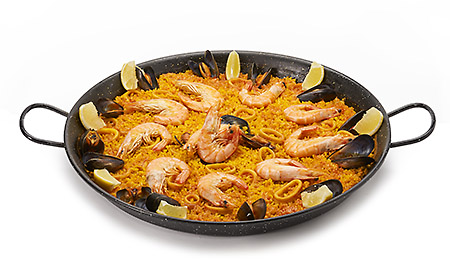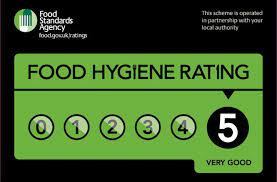Paella

Paella - What’s in the Pan?
Most people who are familiar with Paella will at least be able to associate it with Spain - this much seems common knowledge. However, far fewer people will know that Paella was born in Valencia where it continues to be a dish highly revered by all Valencianos…wherever they might be.
Authentic? Traditional? Proper?
As a Valenciano myself, and someone who has been lucky enough to eat Paella in some of the best spots in and around Valencia, one of the reasons that drove me to start the business was to educate and inform customers.
So, a little bit of basic history then. In and around the 8th Century, the Moors invaded Spain (Iberian Peninsula) and settled. They introduced the hitherto unknown ingredient ‘rice’, to the regions of Andalusia, their primary stronghold. Over time, rice made its way North Eastwards towards the province and city of Valencia where its cultivation was facilitated by the fertile Albufera ‘lagoon’ along with agrotechnology introduced by the Moors (they also applied their skills to facilitate the establishment of a thriving citrus industry, popularising the Valencian Orange).
Whilst plenty of origin stories exist, it is very likely that early interpretations were based on what ingredients (apart from rice) were available to the cook. When I say ‘the cook’, we are talking about peasants, the majority of the population at the time. Like many other dishes, Paella was initially considered a staple dish for the poor - not least of all because the rich merchants and aristocracy of Valencia would avoid the mosquito-ridden environs of Albufera. If you were poor and you lived in the province of Valencia, you were likely working the land or the sea. Fishermen would use any part of their catch that they couldn’t sell at the market to create early interpretations of ‘seafood paella’ or Paella de marisco. Those who worked the land would seek out other forms of protein for their Paella - chicken, rabbit, snails, frogs and even rats (plump, healthy specimens that lived in the rice paddies, not the city vermin).
This latter way of cooking Paella would eventually deliver the definitive or traditional Paella Valenciana - Chicken, Rabbit, green bean (ferraura), white bean (garrafó), tomato, saffron, salt, extra virgin olive oil, rice and water. Don’t take my word for it - this list of ingredients was ratified by the Consellería de Agricultura de la Comunidad Valenciana as integral to traditional, authentic Paella Valenciana.
What about chorizo, bacon, peas?
No. Never. If you want to make and serve ‘savoury’ rice, then I guess you are free to add anything you fancy - just don’t call it Paella, because it isn’t. Even in Valencia where the agreed etiquette is to call other rice dishes, “arroz con cosas” (rice with things), they would never use these types of ingredients. Chorizo and bacon are pork products, poor people could never have afforded to keep a pig so it wasn’t ever included. Chorizo contains pork fat (lard) which if cooked following the proper process for a Paella, would render down and sink to the bottom of the pan where it would likely burn and turn the Paella bitter. The only ‘fat’ we use is olive oil. Also, the principal flavouring ingredient in chorizo is smoked paprika so you would overload the Paella with a smoked paprika taste. Peas are too sweet for a Paella - flat green beans and white beans are perfect.
At Valencia Supper Club, we concentrate on the more popular Paellas - Chicken, Seafood and Vegetarian. We can also offer some other tasty versions such as, Arroz Negro, a seafood Paella made with squid ink or Arroz de Costillas made with pork ribs and a Lamb Cop version too. We use the best available ingredients and follow proper Paella procedure when cooking all of our Paellas.
All of our Paellas are gluten-free and dairy-free.

Read our reviews on Google

Food hygiene rating with local council
